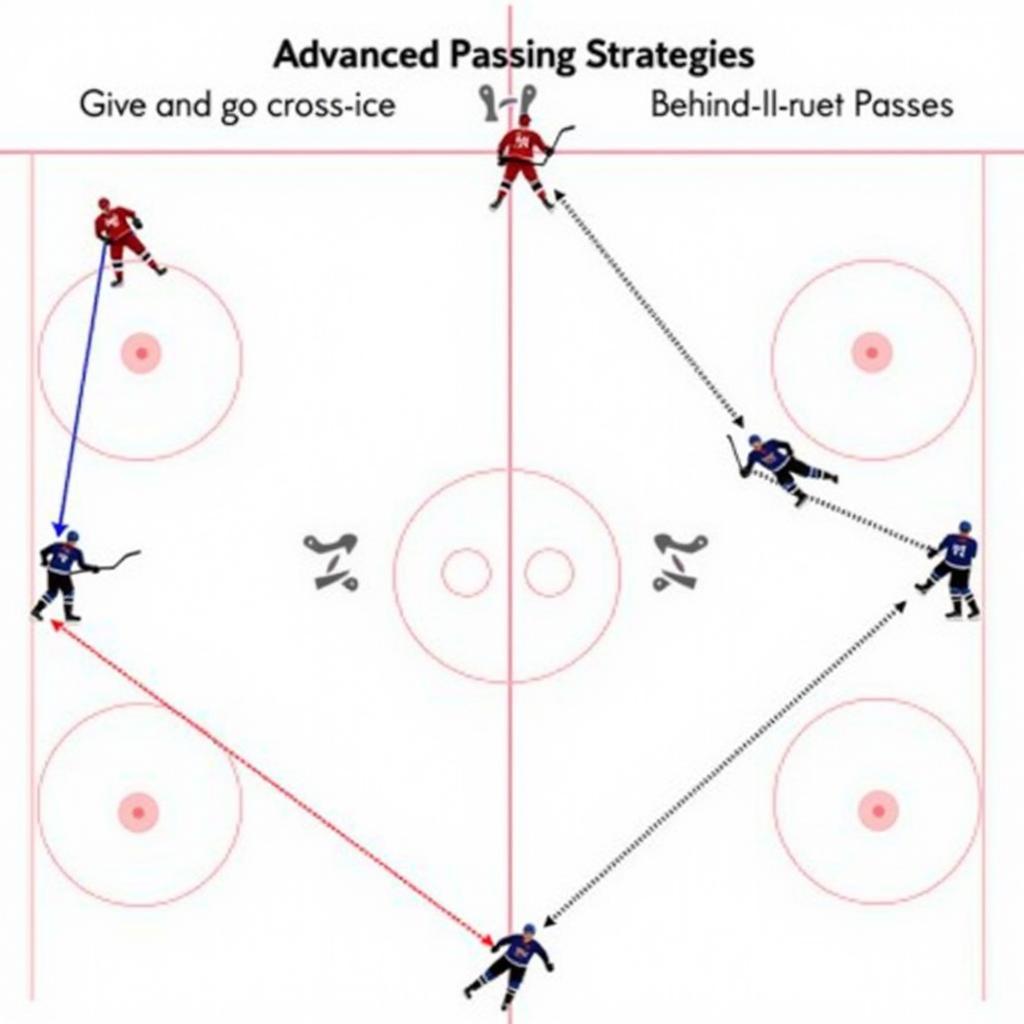Mastering the Passer for Hockey
November 2, 2024A “passer” in hockey isn’t just someone who throws the puck around; it’s an artist creating plays, a strategist dictating the flow of the game. Understanding the art of passing is crucial for any hockey player aspiring to elevate their game, whether you’re aiming for the NHL or just dominating your local league.
The Importance of a Precise Hockey Pass
Effective passing is the backbone of successful hockey. It’s the key to maintaining possession, creating scoring opportunities, and ultimately, winning games. A well-timed and accurate pass can break down a defense, leaving opponents scrambling and creating open space for teammates to capitalize on. Without a solid understanding of passing techniques, individual brilliance is often stifled, and team synergy becomes difficult to achieve.
Fundamental Passing Techniques
The foundation of any good pass starts with the basics. Gripping the stick correctly, utilizing the right amount of force, and following through smoothly are all essential components. The most common types of passes include the forehand pass, backhand pass, and saucer pass. Each serves a unique purpose and requires practice to master.
- Forehand Pass: The workhorse of hockey passing, the forehand pass provides power and accuracy for short and medium-range plays.
- Backhand Pass: Useful for quick, unexpected plays in tight situations, the backhand pass is less powerful but can be highly effective.
- Saucer Pass: This pass elevates the puck, allowing it to clear sticks and skates, making it ideal for longer distances or through traffic.
A great way to enhance your passing skills is with the help of a hockey pass trainer. It allows for repetitive practice, improving accuracy and speed.
Advanced Passing Strategies
Beyond the fundamental techniques, developing advanced passing strategies is what separates good players from great ones. Anticipation, vision, and communication are crucial elements. Knowing where your teammate will be before they get there, seeing the open ice, and communicating effectively through calls and signals are all vital for creating successful plays.
- Give-and-Go Passing: A classic two-player maneuver that relies on quick passing and movement to create scoring opportunities.
- Cross-Ice Passing: A risky but rewarding pass that stretches the defense and opens up the ice for a one-timer shot.
- Behind-the-Net Passing: Utilizing the space behind the net to create confusion and set up a teammate for a quick shot.
 Advanced Hockey Passing Strategies Visualization
Advanced Hockey Passing Strategies Visualization
You can elevate your game by using equipment used by professionals, like the nathan mackinnon stick, known for its precision and power.
The Role of a Passer in Different Hockey Positions
Different positions on the ice demand unique passing skills. Defensemen often utilize long, accurate passes to transition the puck up the ice, while forwards rely on quick, precise passes in the offensive zone to create scoring chances. Understanding the specific passing requirements of your position is crucial for maximizing your effectiveness.
Training Drills for Improving Passing Accuracy
Consistent practice is essential for improving passing accuracy. There are numerous drills that can be utilized, both individually and with teammates, to hone your skills. These drills focus on developing speed, accuracy, and the ability to pass under pressure. Examples include:
- Wall Passing: Practicing against a wall to improve accuracy and stickhandling skills.
- Partner Passing: Working with a teammate to develop passing and receiving skills.
- Passing Through Cones: Improving accuracy and stickhandling by navigating the puck through a series of cones.
Quote from Coach Alex Mercer, former NHL player: “Passing is not just about getting the puck to your teammate; it’s about putting them in the best position to succeed.”
Quote from Mia Karlsson, Professional Hockey Player: “Mastering the different types of passes is crucial, but anticipating your teammates’ movements is what truly elevates your passing game.”
Conclusion
Becoming a proficient Passer For Hockey requires dedication and practice. By mastering the fundamental techniques, understanding advanced strategies, and dedicating yourself to consistent training, you can significantly improve your passing skills and contribute to your team’s success. Remember, a precise passer for hockey is not just a player, but a playmaker.
FAQ
- What is the most important aspect of a good hockey pass? Accuracy and timing.
- What are the three main types of hockey passes? Forehand, backhand, and saucer.
- How can I improve my passing accuracy? Practice drills regularly, focusing on technique and speed.
- What is the role of a passer in hockey? To maintain possession, create scoring opportunities, and facilitate team play.
- What are some advanced passing strategies? Give-and-go, cross-ice, and behind-the-net passes.
- Why is communication important in passing? To ensure teammates are ready to receive the puck and avoid turnovers.
- How can I practice passing on my own? Use a wall or rebounder to develop accuracy and stickhandling.
Common Passing Scenarios and How to Handle Them
-
Scenario: Receiving a pass while under pressure from an opponent.
-
Solution: Use a quick touch to control the puck and make a short, accurate pass to a teammate.
-
Scenario: Making a pass through a crowded neutral zone.
-
Solution: Use a saucer pass to elevate the puck over sticks and skates.
-
Scenario: Setting up a teammate for a one-timer shot.
-
Solution: Make a crisp, accurate cross-ice pass to their stick blade.
Further Exploration
Check out our articles on how to improve your stickhandling and shooting skills to become a well-rounded hockey player.
Need assistance with your hockey journey? Contact us! Phone: 0915117113, Email: fanyamal@gmail.com, or visit us at: Hamlet 3, Binh An, Phu Thuong, Vietnam, Binh Phuoc 830000, Vietnam. We have a 24/7 customer support team ready to help.